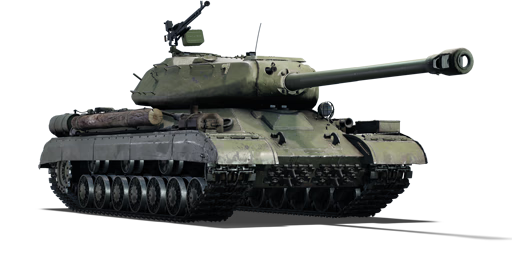The IS-4M is an improved modification of the fourth variant of the IS heavy tank family. Like the IS-3, the IS-4 (designation Object 701) was intended to replace the IS-2. The IS-4 was designed to be the pride of the Soviet Army, with extremely thick armour, a weight of 53 tonnes, and a 750 horsepower V-12 diesel engine capable of reaching speeds of up to 43 km/h. Despite being an upgrade to the IS-2, it never offered much to the table, particularly when compared to the IS-3, a lighter, faster, and cheaper tank that had stunned the Western world only a few years previously. The IS-4, most importantly, used the same 122 mm D-25T tank gun as the IS-2 and IS-3. Production began in March 1947 and stopped in 1949, as any work on tanks weighing more than 50 tonnes was to be terminated. The tank proved to be too heavy, sluggish, and poorly built. IS-4M, a small batch of 25 units with some enhancements, was constructed in 1951. Only 258 units were built in total.
Introduced in the Closed Beta Test for Ground Forces before Update 1.41, the IS-4M is an immediate successor of the IS-3, and it has even greater armour, making it difficult for many opponents to penetrate from the front. Needless to say, this tank is nearly invulnerable to conventional ammunition from the front. Unfortunately, the main armament remains the same 122 mm D-25T tank gun used on all prior IS heavy tank variants beginning with the IS-2, and at this rank, it simply feels inadequate sometimes. The gameplay differs slightly from its predecessor in that angling can work, but it must be done properly. A small angle will enhance the hull armour all around from the frontal perspective. Furthermore, since it is substantially heavier, the IS-4M is less manoeuvrable, making it difficult to play in faster-paced battles in higher ranks.















